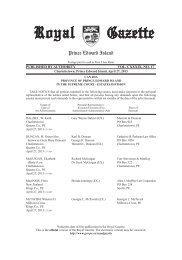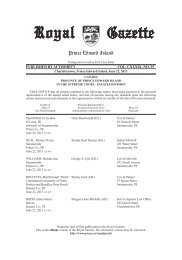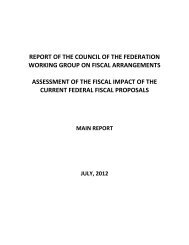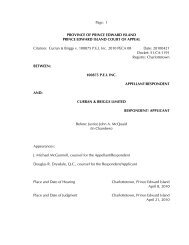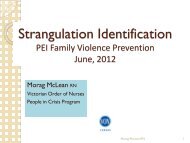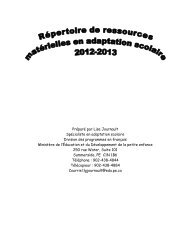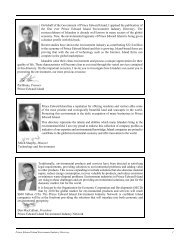Mental Math Grade 6 Teacher's Guide
Mental Math Grade 6 Teacher's Guide
Mental Math Grade 6 Teacher's Guide
You also want an ePaper? Increase the reach of your titles
YUMPU automatically turns print PDFs into web optimized ePapers that Google loves.
Division Facts With Dividends to 81<br />
• “Think-Multiplication”<br />
<strong>Grade</strong> 5<br />
Mastery by year-end<br />
For 36 ÷ 6, think “6 times what equals 36?”<br />
Balancing for a Constant Difference Involves changing both numbers in a subtraction sentence by the<br />
same amount to make it easier to complete. The difference between<br />
the two numbers remains the same.<br />
Eg. for 27 - 16, add 3 to each number and think, “30 - 19 = 11"<br />
Multiply by 0.1, 0.01, 0.001 using a placevalue-change<br />
strategy<br />
The place values for a number multiplied by 0.1 decrease 1 place.<br />
Eg. 34 x 0.1; The 4 ones becomes 4 tenths and the 3 tens becomes 3<br />
ones; 3 and 4 tenths, or 3.4.<br />
Front-End Multiplication (Distributive Principle) Involves finding the product of the single-digit factor and the digit in<br />
the highest place value of the second factor, and adding to this<br />
product a second sub-product. 706 x 2 = (700 x 2) + (6 x 2) = 1412<br />
Compensation in Multiplication Involves changing one factor to a 10 or 100, carrying out the<br />
multiplication, and then adjusting the product to compensate for the<br />
change. 7 x 198 = 7 x 200 (1400) subtract 14 = 1386<br />
Divide by 10, 100, 1000 using a place-valuechange<br />
strategy.<br />
The place values for a number divided by 10 decrease 1 place.<br />
Eg. 34 ÷ 10; The 4 ones becomes 4 tenths and the 3 tens becomes 3<br />
ones; 3 and 4 tenths, or 3.4.<br />
Rounding in Multiplication Highest place values of factors are rounded and multiplied. When<br />
both numbers are close to 5 or 50, one number rounds up and the<br />
other down.<br />
Divide by 0.1, 0.01, 0.001 using a place-valuechange<br />
strategy<br />
Finding Compatible Factors (Associative<br />
Property)<br />
<strong>Grade</strong> 6<br />
The place values for a number divided by 0.01 increase 2 places.<br />
Eg. 34 ÷ 0.01; The 4 ones becomes 4 hundreds and the 3 tens<br />
becomes 3 thousand; 3000 + 400 = 3400<br />
Involves looking for pairs of factors, whose product is easy to work<br />
with, usually multiples of 10. For example, for 2 x 75 x 500, think, “2 x<br />
500 = 1000 and 1000 x 75 is 75 000.<br />
Halving and Doubling One factor is halved and the other is doubled to make the<br />
multiplication easier. Students would need to record sub-steps.<br />
For example, 500 x 88 = 1000 x 44 = 44 000.<br />
Using division facts for 10s, 100s 1000s Dividends in the 10s, 100s, and 1000s are divided by single digit<br />
divisors. The quotients would have only one digit that wasn’t a zero.<br />
For example, for 12 000 ÷ 4, think single digit division facts.<br />
12 ÷ 4 = 3, and thousands divided by ones is thousands, so the<br />
answer is 3000.<br />
Partitioning the Dividend (Distributive Property) The dividend is broken up into two parts that are more easily divided<br />
by the divisor. For example, for 372 ÷ 6, think, “(360 + 12) ÷ 6,<br />
so 60 + 2 is 62.”<br />
62 <strong>Mental</strong> <strong>Math</strong> – <strong>Grade</strong> 6



